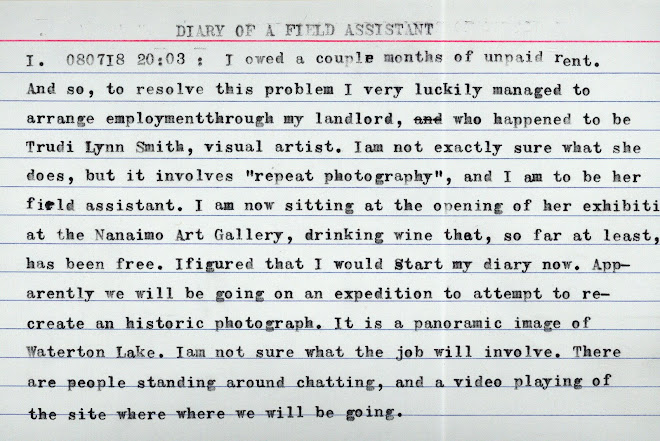The Harrison method has been assimilated. Let the horizontal distance of the camera lens to the right or left of the position of the original station be the x coordinate, the distance front to rear from the original position be the y coordinate, and the distance above or below be the z coordinate. A ratio of two distances along the x (horizontal) axis of the original photograph is used to generate a quantitative measure of the camera position of the attempted repeat relative to the original camera position. The x axis ratio in Smith's analysis is the distance from point C' to point B (C'B) over the distance from point A to point C' (AC'); hence C'B/AC'. The y (forward-and-back) coordinate is arrived at by comparing the distance between two points at approximately the same distance from the camera, CB, between the original and attempted repeat. The z (vertical) coordinate uses three points at the same height but at different distances from the camera, hence the ratio F''C/E''F''.
These ratios are normalized to unity "1" in the original. A value of less than 1 in a repeat along the x axis indicates that the camera is to the left, if the value is greater than one, the camera is to the right. A value greater than 1 of the y coordinate of the attempted repeat indicates that the camera is too close. A value greater than 1 of the z coordinate of attempted repeat indicates that the camera position is too high.
Comparisons with photograph J27 001 suggested that Smith's camera position was very slightly to the right, too close, and too high.
Smith's Blog
Monday, July 28, 2008
Subscribe to:
Post Comments (Atom)

No comments:
Post a Comment